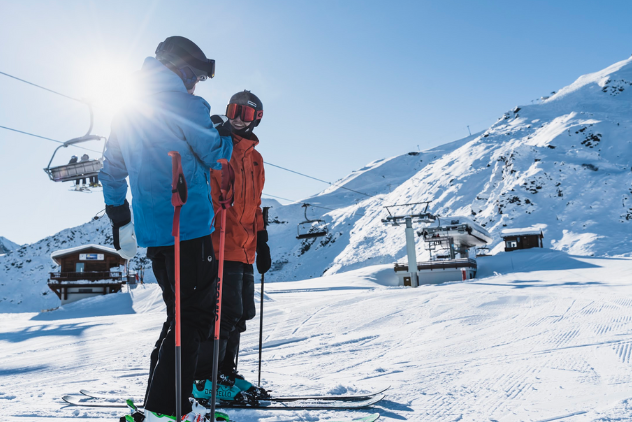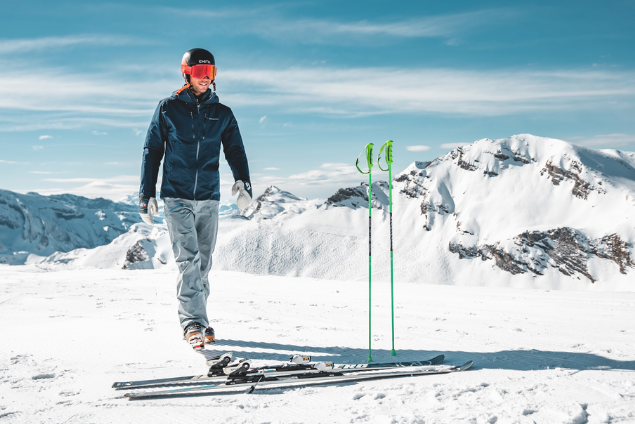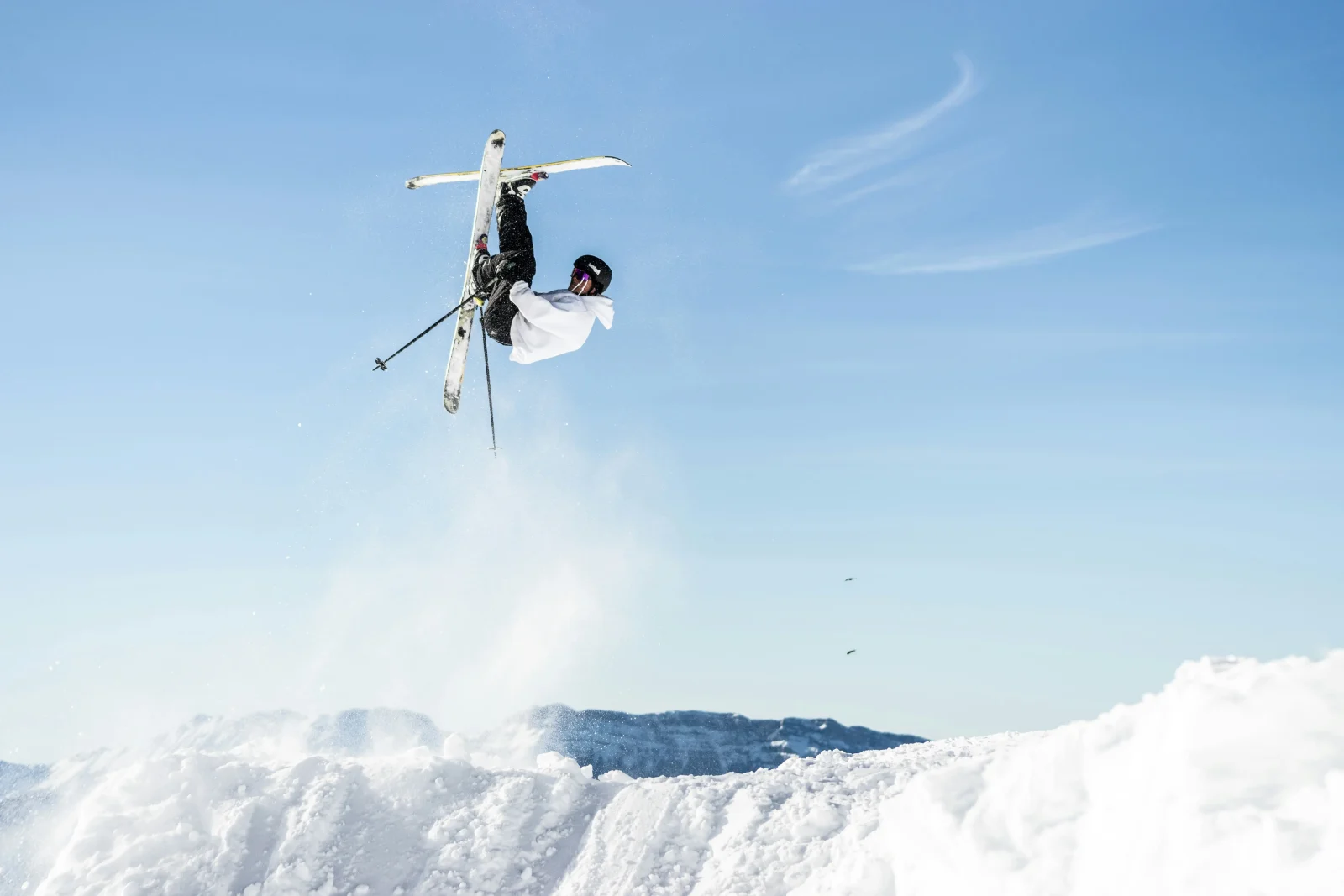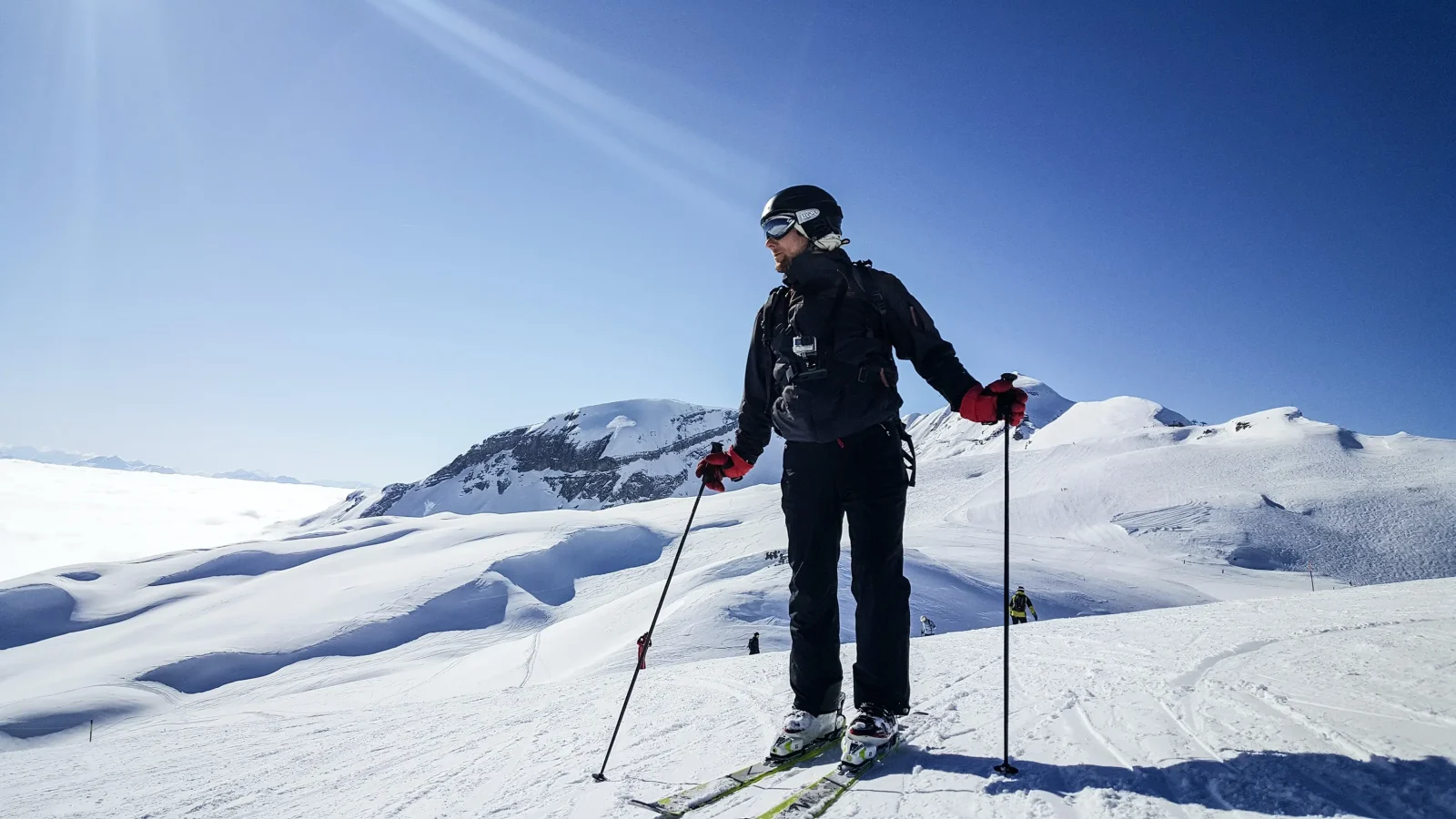How to avoid risks and enjoy fair-weather skiing…
Spring skiing is a lot of fun, with warmer temperatures and sunny skies, but it can also pose some unique risks to skiers and snowboarders. The melting snow can create slushy, inconsistent conditions that may increase the likelihood of falls and injuries. Find our top tips you can follow to prevent ski injuries when skiing on slushy snow:

Check your ski equipment:
Make sure your skis or snowboard are properly tuned and that your bindings are adjusted correctly. You may need to have your DIN settings lower than usual so your skis come off more easily if you fall and land at an awkward angle. Our rental partner, SkiSet, will be sure to adjust your skis appropriately for the snow in each ski resort.
Choose your terrain wisely:
Try to stick to runs that are well-groomed and avoid areas with slushy or heavy, wet snow. First thing in the morning, when the temperatures are cooler and the slopes are more icy, look for slopes that have the sun on them so the snow has been able to soften slightly. As the temperature warms up, then head to slopes that get the sun later or are north-facing. By the end of the day when all the slopes will have soft snow, look for areas that are more remote so that you can avoid the main slopes which will be the bumpiest.
Book a ski instructor:
The independent instructors at Maison Sport are here to help! An instructor can guide you to areas with the best conditions and give you additional technical pointers for skiing in slushy spring snow. Book one of our expert ski instructors here!
Wear appropriate ski gear:
In springtime, temperatures can fluctuate, so dress in layers that can be easily removed as needed. Make sure to always wear a helmet, gloves and long sleeves so you are adequately protected if you fall.
Warm up properly and take breaks when needed:
Take the time to stretch and warm up before hitting the slopes. This can help prevent muscle strains and other injuries. Take breaks if you are getting tired or sore. Skiing in slushy snow can be tiring, so make sure to take breaks and hydrate throughout the day to prevent fatigue and reduce the risk of injury.
Know your limits:
Spring skiing can be very challenging, so it’s important to know your abilities and ski within your limits. Don’t push yourself too hard or attempt runs that are beyond your skill level. If you are worried or unsure about which runs to take, booking an instructor will help you find your confidence and sharpen up your technique to help you ski better on slushy, spring snow.
Practice makes perfect, so the more you ski or snowboard in softer, slushier snow, the more comfortable you’ll become!
If you are booking a trip at the end of the season make sure to check out the closing dates of all the resorts to make sure you are booking when the lifts are still open. For snow-sure skiing conditions, high-altitude resorts are definitely worth considering when looking for ski resorts to go to in the warmer spring months.



